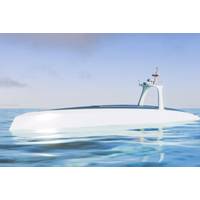
Design Images of World’s First Long-Range Autonomous Research Vessel Released
Plymouth Marine Laboratory (PML) has released a video featuring a computer-generated imagery (CGI) impression of the world’s first long-range autonomous research vessel, Oceanus.The 24-meter vessel, designed by MSubs, will be fully-uncrewed, self-righting and capable of carrying an array of monitoring sensors to collect data for research into areas such as climate change, biodiversity, fisheries and biogeochemistry. The vessel will be able to reach remote areas of the ocean that are difficult or impossible to sample through traditional research vessels, whether due to remote locations or
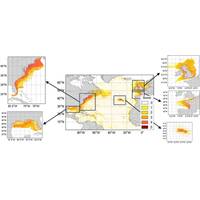
High-Risk Litter Zones Threaten North Atlantic Wildlife
A new study, led by Plymouth Marine Laboratory, has revealed five high-risk zones where floating plastic litter poses the greatest risk to North Atlantic marine life.An estimated 19 to 23 metric tons of plastic waste entered the world's aquatic ecosystems in 2016 and this figure is predicted to triple by 2030.Land-based sources of plastic are thought to account for about 80% of plastic pollution in the marine environment, with single use items such as plastic bags, bottles, wrappers, food containers and cutlery among the most common items found. These items are often transported far from their

Speaker Line-Up for Catch the Next Wave’s Return at Oi24
RepairBeyond Net Zero - Kelly Wanser, Executive Director, SilverLiningBeyond Net Zero: The Role of the Ocean in Climate Repair - Ed Hill, CEO, National Oceanography Centre•Protecting the Earth’s Living SystemsRestoring the Ocean - Professor Helen Findlay, Biological Oceanographer, Plymouth Marine Laboratory•The Future Evolution of Key Enabling TechnologiesSensors - Jyotika Virmani, Executive Director, Schmidt Ocean InstituteRobotics - Justin Manley, President, Marine Technology SocietyAnalytics, Digital Twins and Artificial Intelligence - Professor Mike Wooldridge, Department of Computer
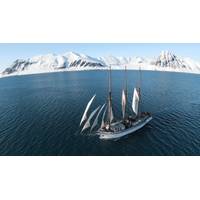
Scientists to Study the Arctic in a Wooden Schooner
scientific and technological equipment such as weather stations, FerryBox, CTD, bathymetry, communications and safety. Additionally, an online dashboard will be created to convey the findings and capture stories through digital and broadcast content capture.The project is being supported by Plymouth Marine Laboratory (PML), Valeport, (which designs and manufactures oceanographic and hydrographic instrumentation), Mole Energy, Dartmoor Brewery and Henri Lloyd.Travelling to seldom-visited areas of the ocean each year between June and October, Ocean Warrior intends to cover 10,000 nautical miles each year
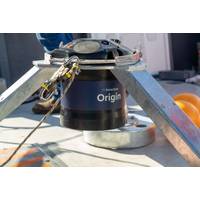
Sonardyne Partners with Smart Sound Plymouth
Marine energy, defense and science company Sonardyne has been selected to provide a subsurface communications and navigation network for the Smart Sound Connect Subsurface (SSCS) Project. Sonardyne will partner with the University of Plymouth and Plymouth Marine Laboratory to install, operate and manage an underwater acoustic communications and navigation network that will link to the existing surface assets.Located in the city of Plymouth and the waters in and around Plymouth Sound, SSCS builds on the existing Smart Sound Plymouth infrastructure that underpins the National Centre for Coastal Autonomy.
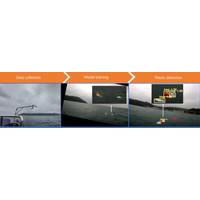
Floating Plastic Litter Detected, Categorized Using AI
and ecosystems and, in turn, posing a threat to human health. To support efforts to mitigate the issue it is vital that marine plastic can be monitored effectively, however this is challenging given the scale, complexity and time required to do so manually.As such, a team of scientists from Plymouth Marine Laboratory have ‘trained’ an Artificial Intelligence (AI) model to recognize and classify the different types of marine plastic captured in images shot by a video camera mounted on the side of a boat.Funded by the PML internal research program and the European Space Agency (ESA), the innovative
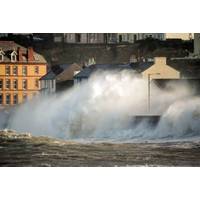
UK Researchers Collaborate on Climate Solutions
resilience and adapt to the pressing challenges of the coming decades.The seven NERC-supported research centres are: British Antarctic Survey, British Geological Survey, the National Centre for Atmospheric Science, the National Centre for Earth Observation, the National Oceanography Centre, Plymouth Marine Laboratory and the UK Centre for Ecology & Hydrology.As a priority, post-COP26, the UKNCSP will pool its partnerships’ resources to ensure aligned and integrated modelling and sustained observing programmes for the evolving global and UK climate. The partnership will engage with government
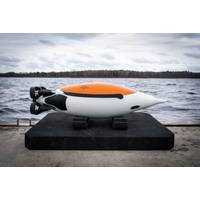
MTR100: When it Comes to Drones, Big is Good. <1m is Better.
are now seeing success. In November last year, UK-based ecoSUB Robotics started selling its micro AUVs to customers and there are now 50-60 out in the wild with various payloads, says Terry Sloane, managing director at parent company Planet Ocean. Customers spread from Africa to Japan include Plymouth Marine Laboratory and Dalhousie University.The company was set up in 2015 and has had Innovate UK and Defence Science and Technology Laboratory (UK MOD) funding and has collaborated with the Marine Autonomous Robotics Systems Group at the UK’s National Oceanography Centre.Its now commercial ecoSUBµ
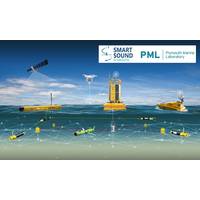
Fleet of Ocean Robots, Buoys, Set for Deployment Off Plymouth
What has been described as a first-of-its-kind multi-million-pound fleet of innovative and interconnected marine technologies is soon set to be deployed off the coast of Plymouth, UK, according to Plymouth Marine Laboratory, a marine research institute.An 8.5-meter-tall Autonomous Data Buoy featuring a set of onboard sensors will soon be deployed offshore as part of Smart Sound Plymouth’s plan to create a world-leading proving ground for high-tech marine innovation."Smart Sound Plymouth stretches over more than 1000km2 of ocean from sheltered bays to hostile offshore waters, providing an



 February 2024
February 2024





